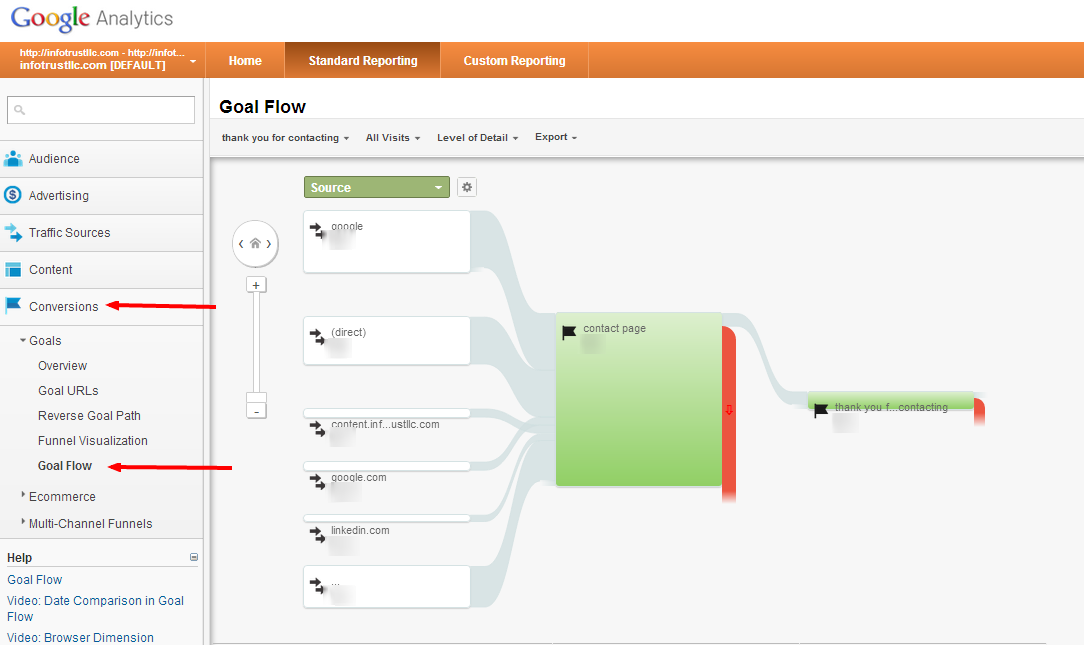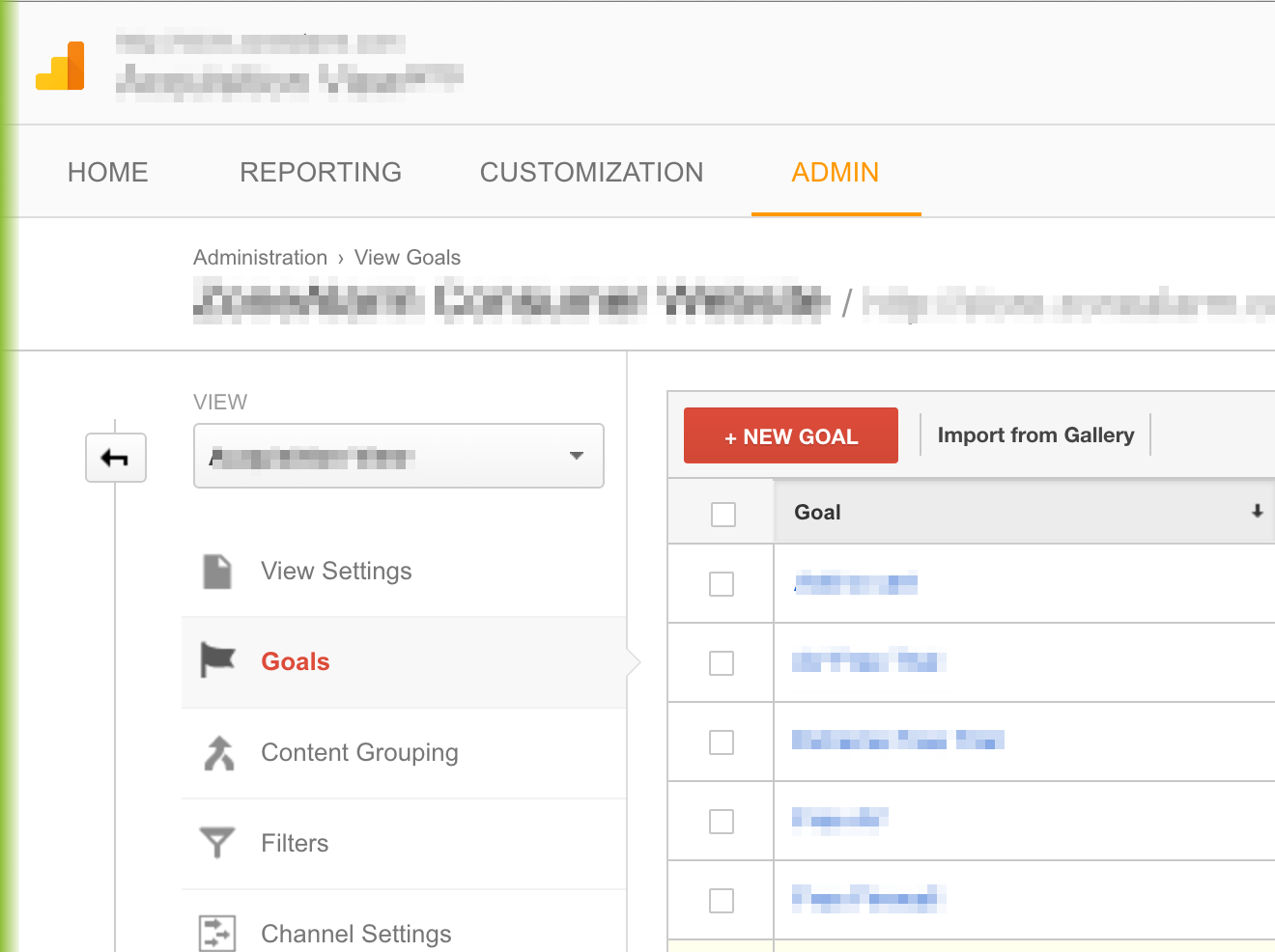What Data Is Google Analytics Goals Unable to Track: A Complete Guide
What Data Is Google Analytics Goals Unable to Track: A Complete Guide
Blog Article
Revealing the Blind Destinations: Comprehending What Google Analytics Goals Can not Measure
In the realm of digital analytics, Google Analytics stands as a powerful tool for tracking and evaluating on-line user interactions. Amidst its robust capabilities, there exist blind areas that typically avert measurement. what data is google analytics goals unable to track. Understanding what Google Analytics goals can not determine is critical for obtaining a thorough sight of individual habits and engagement. As we look into the intricacies of these dead spots, we reveal an intricate internet of undiscovered regions that hold useful insights into customer activities and motivations, tough standard knowledge and clarifying the limitations of our data-driven understanding.
Customer Habits on External Operatings Systems
Understanding just how individuals interact on exterior platforms is crucial for enhancing on the internet techniques. Exterior platforms, such as social media sites networks, recommendation websites, and on-line discussion forums, play a significant function in driving traffic to a business's website. By examining individual behavior on these platforms, organizations can get valuable insights into the efficiency of their advertising and marketing initiatives and the choices of their target market.
One secret aspect of user behavior on external systems is the recommendation resource. By tracking where the users are originating from, organizations can identify which systems are driving the most traffic to their internet site. This information can assist companies allocate their resources a lot more properly, concentrating on the platforms that generate the very best outcomes.

Offline Communications and conversions
Analyzing customer behavior on external platforms provides useful insights right into on the internet techniques; however, taking into consideration offline conversions and communications is equally essential for a thorough understanding of a business's overall efficiency. Offline conversions, such as in-store purchases or phone questions, play a substantial role in lots of companies' success.

Attribution Beyond Last Click
When diving right into the world of digital advertising analytics, it becomes vital to look past the solitary touchpoint of the last click for a more detailed understanding of acknowledgment. While Google Analytics provides important insights into individual habits, depending only on last-click acknowledgment can be restricting - what data is google analytics goals unable to track. Acknowledgment versions that go past the last click provide a much more nuanced sight of the consumer trip, thinking about all the touchpoints that lead to a conversion
Acknowledgment past the last click enables marketing experts to appoint credit rating to various communications along the conversion path, giving a more clear photo of the websites performance of different advertising and marketing networks. By checking out multi-touch acknowledgment designs such as linear, time degeneration, or position-based acknowledgment, businesses can better allot their advertising and marketing budget plans and enhance their techniques for maximum influence.
Recognizing the influence of each touchpoint in the conversion process is critical for making educated decisions and taking full advantage of ROI. By embracing attribution beyond the last click, businesses can obtain deeper insights right into customer actions and tailor their advertising and marketing efforts better.
Cross-Device and Cross-Browser Monitoring

Similarly, cross-browser tracking complements cross-device tracking by catching customer actions as they switch in between different web browsers. Comprehending exactly how customers connect with websites on various web browsers can aid marketers optimize their on the internet experiences to make sure uniformity and capability throughout various systems.
Qualitative Information and Customer Intent
Recognizing customer intent through qualitative data evaluation is essential for creating targeted digital marketing strategies that reverberate with the demands and choices of the target market. Qualitative information provides understandings into the 'why' behind user activities, clarifying motivations, emotions, and preferences browse around this site that quantitative information alone can not record. By evaluating customer comments, comments, and interactions, online marketers can discover beneficial details regarding individual intent, allowing have a peek at this site them to customize their messaging, content, and offerings to much better align with what their target market is looking for.
Qualitative data additionally aids in comprehending the context in which users involve with a site or application. This contextual understanding makes it possible for marketing experts to produce more tailored and appropriate experiences, eventually driving higher engagement and conversion prices. By diving right into individual intent through qualitative information analysis, services can acquire a deeper understanding of their target market, causing more reliable marketing techniques that fulfill individuals' needs and expectations.
Conclusion
Finally, Google Analytics goals have restrictions in measuring individual actions on external platforms, offline conversions, acknowledgment beyond last click, cross-browser and cross-device tracking, and qualitative data connected to individual intent. what data is google analytics goals unable to track. It is essential for businesses to be knowledgeable about these unseen areas in order to supplement their information evaluation with other devices and methods to get an extra extensive understanding of their target market and improve their general electronic marketing strategies
By analyzing individual actions on these platforms, services can obtain important understandings into the efficiency of their advertising efforts and the choices of their target audience.
Examining user actions on external platforms supplies beneficial understandings into online methods; nevertheless, taking into consideration offline conversions and communications is just as vital for a thorough understanding of a firm's overall performance.In digital marketing analytics, relocating past last-click acknowledgment to discover cross-device and cross-browser tracking is crucial for gaining a holistic understanding of customer interactions throughout different systems and tools. By assessing user feedback, comments, and interactions, marketing professionals can discover useful info concerning individual intent, enabling them to tailor their messaging, content, and offerings to better straighten with what their target market is seeking.
By delving right into customer intent with qualitative information analysis, businesses can acquire a deeper understanding of their target audience, leading to more reliable advertising and marketing techniques that meet customers' demands and assumptions.
Report this page